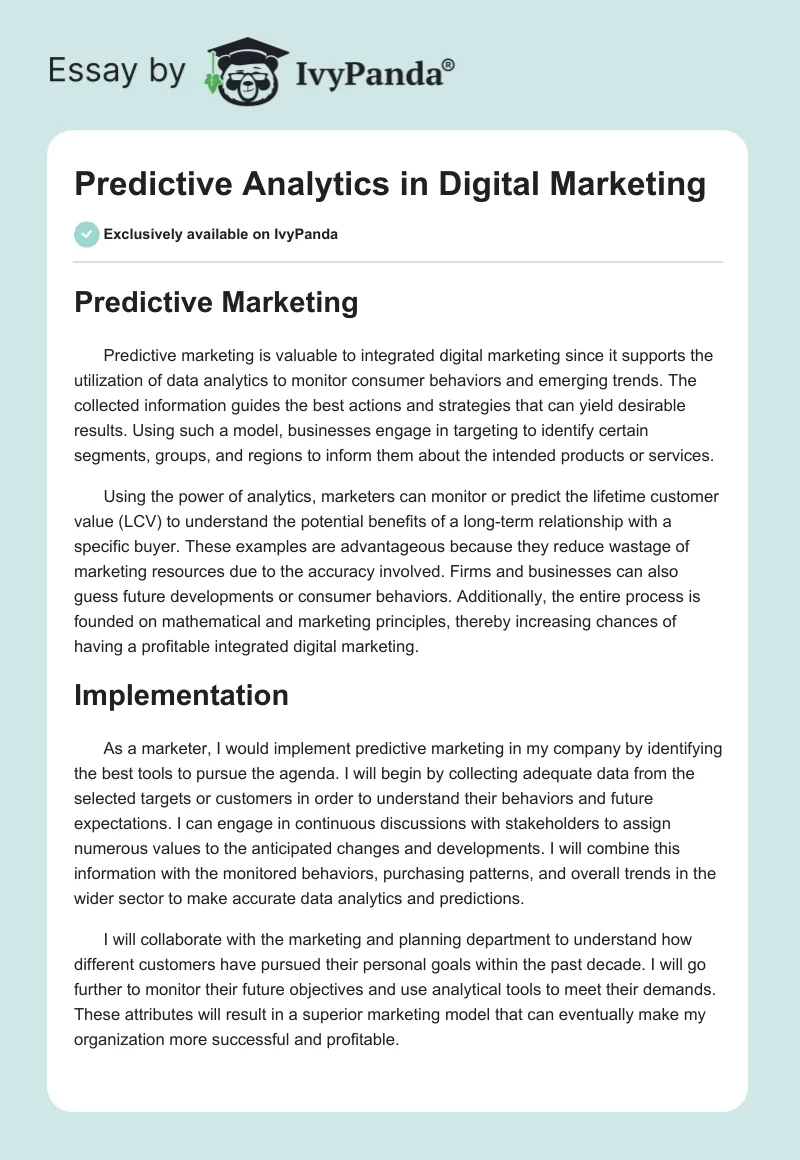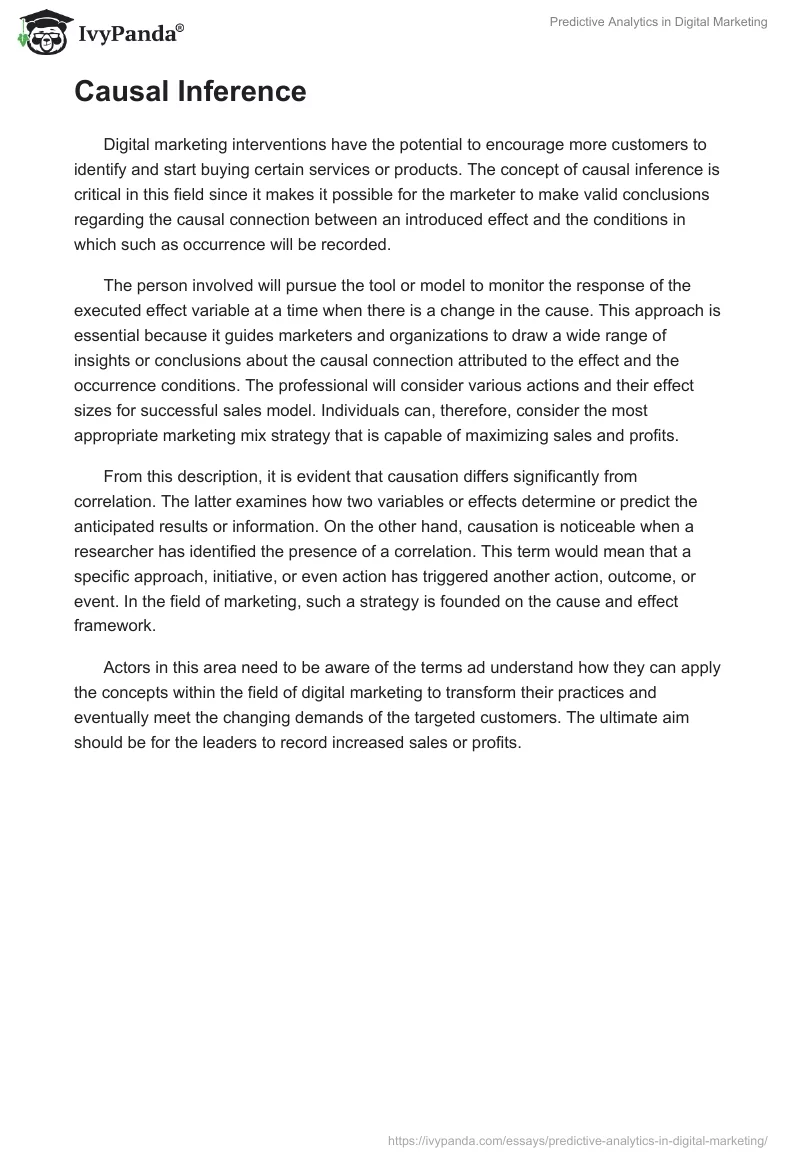Predictive Marketing
Predictive marketing is valuable to integrated digital marketing since it supports the utilization of data analytics to monitor consumer behaviors and emerging trends. The collected information guides the best actions and strategies that can yield desirable results. Using such a model, businesses engage in targeting to identify certain segments, groups, and regions to inform them about the intended products or services.
Using the power of analytics, marketers can monitor or predict the lifetime customer value (LCV) to understand the potential benefits of a long-term relationship with a specific buyer. These examples are advantageous because they reduce wastage of marketing resources due to the accuracy involved. Firms and businesses can also guess future developments or consumer behaviors. Additionally, the entire process is founded on mathematical and marketing principles, thereby increasing chances of having a profitable integrated digital marketing.
Implementation
As a marketer, I would implement predictive marketing in my company by identifying the best tools to pursue the agenda. I will begin by collecting adequate data from the selected targets or customers in order to understand their behaviors and future expectations. I can engage in continuous discussions with stakeholders to assign numerous values to the anticipated changes and developments. I will combine this information with the monitored behaviors, purchasing patterns, and overall trends in the wider sector to make accurate data analytics and predictions.
I will collaborate with the marketing and planning department to understand how different customers have pursued their personal goals within the past decade. I will go further to monitor their future objectives and use analytical tools to meet their demands. These attributes will result in a superior marketing model that can eventually make my organization more successful and profitable.
Causal Inference
Digital marketing interventions have the potential to encourage more customers to identify and start buying certain services or products. The concept of causal inference is critical in this field since it makes it possible for the marketer to make valid conclusions regarding the causal connection between an introduced effect and the conditions in which such as occurrence will be recorded.
The person involved will pursue the tool or model to monitor the response of the executed effect variable at a time when there is a change in the cause. This approach is essential because it guides marketers and organizations to draw a wide range of insights or conclusions about the causal connection attributed to the effect and the occurrence conditions. The professional will consider various actions and their effect sizes for successful sales model. Individuals can, therefore, consider the most appropriate marketing mix strategy that is capable of maximizing sales and profits.
From this description, it is evident that causation differs significantly from correlation. The latter examines how two variables or effects determine or predict the anticipated results or information. On the other hand, causation is noticeable when a researcher has identified the presence of a correlation. This term would mean that a specific approach, initiative, or even action has triggered another action, outcome, or event. In the field of marketing, such a strategy is founded on the cause and effect framework.
Actors in this area need to be aware of the terms ad understand how they can apply the concepts within the field of digital marketing to transform their practices and eventually meet the changing demands of the targeted customers. The ultimate aim should be for the leaders to record increased sales or profits.



